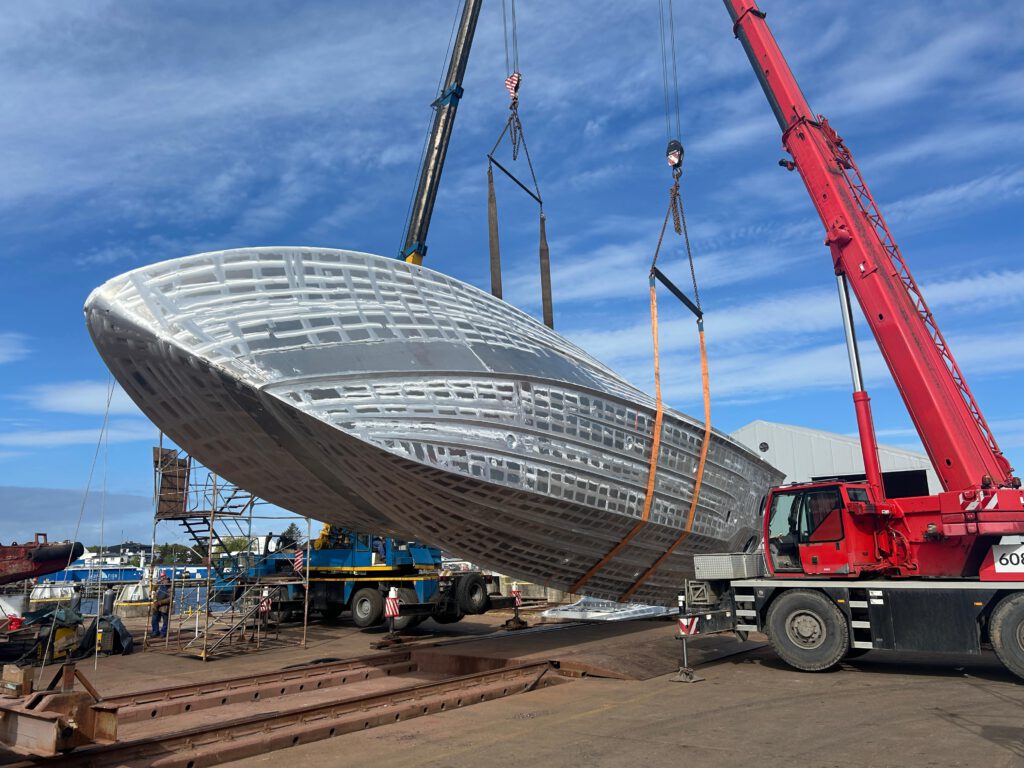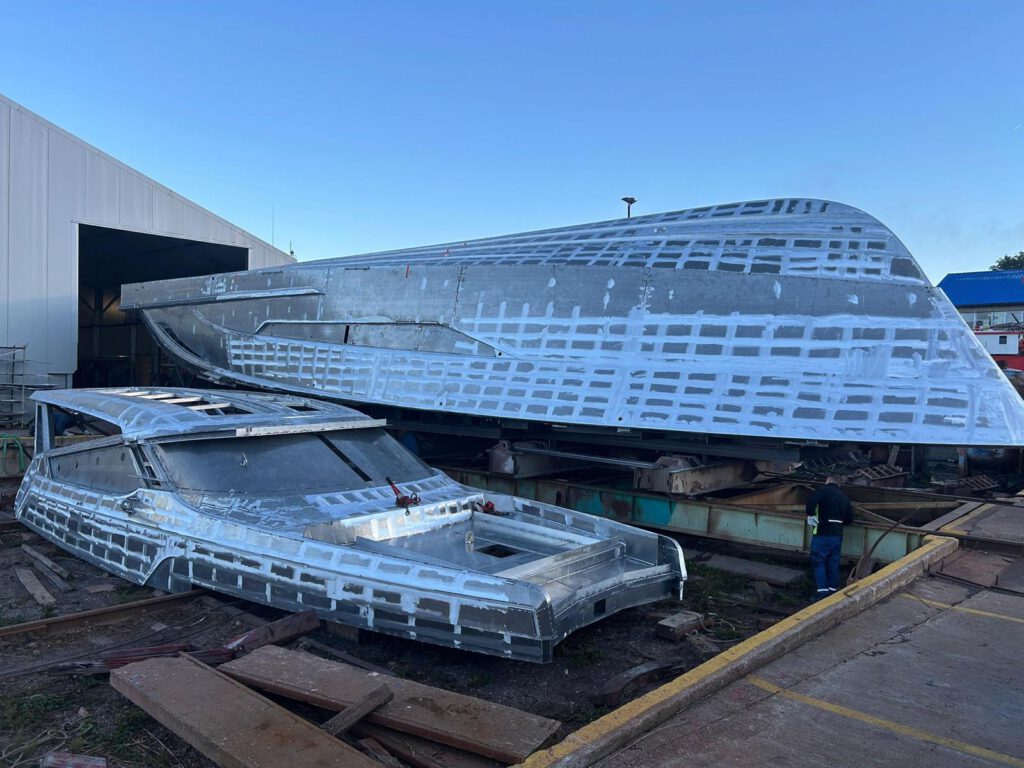It’s the 7th hull that we have built here. A milestone.
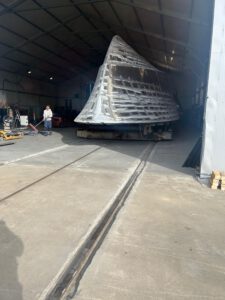
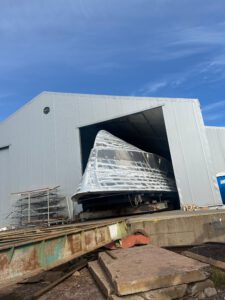
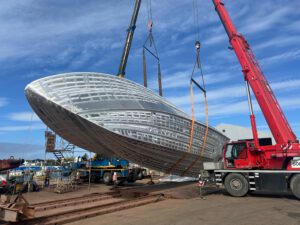
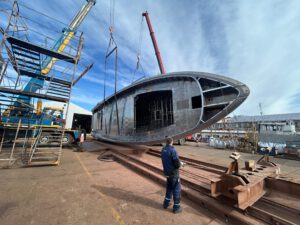
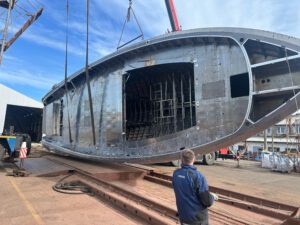
We sometimes are asked why these aluminum Wajer 77 boats are built upside down—meaning with the deck facing downward. Well, that’s done for several practical and technical reasons:
Welding Efficiency: Welding is generally easier and more precise when working in a downward or flat position. Building the hull upside down allows welders to work with gravity rather than against it, which improves the quality and strength of the welds.
Access and Ergonomics: Constructing the boat upside down provides better access to the bottom of the hull, which is typically the most complex and structurally important part. This orientation allows workers to reach difficult angles more easily and to work in a more comfortable position.
Structural Alignment: Starting with the hull upside down ensures that the keel and frame alignment are extremely accurate. Gravity helps keep components in position during assembly, which is crucial for maintaining the boat’s symmetry and stability.
Safety and Stability During Construction: An upside-down hull tends to be more stable on the ground during the early stages of construction. This reduces the risk of tipping or shifting, which can be dangerous.
Once a hull is complete and structurally sound, it is flipped right side up to continue work on the deck and superstructure.
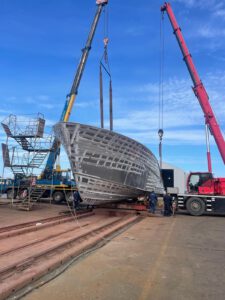
Hull #007 that is built at our DAR Shipyard in Dartow.

